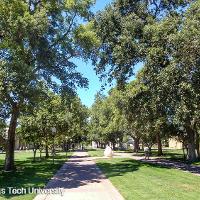Siberian Elm
Ulmus pumila
Deciduous-Trees
(Detailed plant information can be found at the bottom of the page.)

Ulmus pumila Photo Gallery
Ulmus pumila Plant Information
| Classification | |
|---|---|
| Scientific Name: | Ulmus pumila |
| Common Name: | Siberian elm |
| Family: | Ulmaceae |
| Suggested Uses: | weed tree that should not be used in most landscape situations |
| Characteristics | |
| Height: | up to 60 feet tall |
| Spread: | 40 feet wide |
| Foliage: | alternate and deciduous doubly serrated with inequilateral base |
| Flower: | inconspicuous |
| Bloom Period: | mid-Spring (March) |
| Fruit: | samara in Spring |
| Bark: | light or dark brown ridged and furrowed |
| Environment | |
| Water: | drought-tolerant |
| Soil: | tolerates poor soil |
| USDA Zone: | zones 4 - 9 |
| Care | |
| Maintenance: | invasive roots, short lived, and canopy die back due to weak wood |
| Pests & Pathology: | will get slime flux (wet wood) and the elm leaf beetle can be a problem on the leaves resistant to Dutch elm disease |
| Additional Notes: | short lived weed tree that should be avoided in the landscape will grow just about anywhere, and has been used to excess in many areas has a black, rounded vegetative bud (not to be confused with the small, pointed vegetative bud of U. parvifolia) |
TTU Plant Resources
-
Address
Texas Tech University, Department of Plant and Soil Science, Box 42122, Lubbock, TX 79409 -
Phone
806.742.2838 -
Email
Melanie.Jackson@ttu.edu




